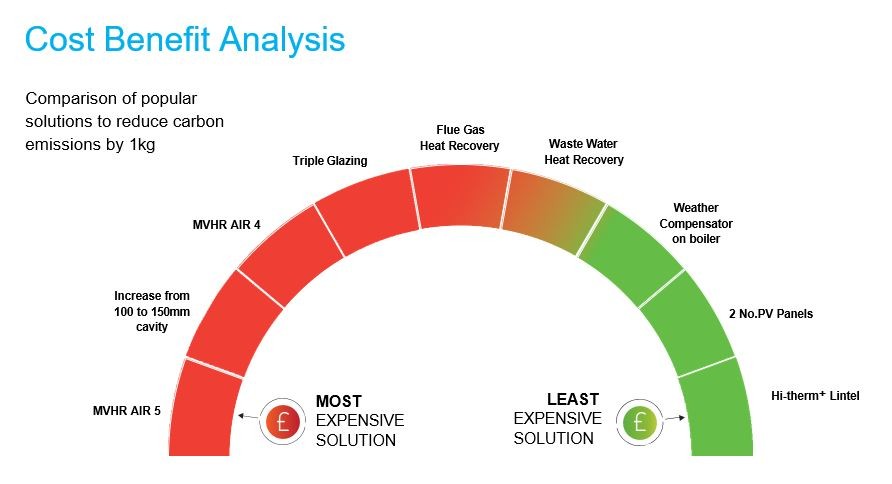A one-piece Thermally Efficient Lintel: With households facing unprecedented energy price rises, a fabric first approach to design will reduce heat loss and create homes that are more affordable to heat. Therefore, tighter U-values in walls, floors and roofs from the outset is far less costly than retrofitting later. Arron ross, Specification Executive for IG Lintels looks at the benefits of a one-piece lintel including low thermal conductivity performance, buildability, improved SAP calculations and why they are up to five times more thermally efficient than standard lintels.
Futureproofing homes has never been more important and it is why fabric measures built-in for the life of a building is one of the most effective ways to reduce energy consumption. This fabric-first approach concentrates efforts on improving fabric u-values, reducing thermal bridging and improving airtightness. When compared to more costly renewable technologies, which have a limited lifespan and risk a significant increase in CO2 emissions once they reach end of life, fabric-first is the secret to improving thermally-efficient building envelopes.

Thermal efficiency
Traditional steel lintels can create a significant thermal bridge in homes due to the high thermal conductivity of steel and because they span over long lengths in a typical build. Therefore, taking into account the thermal performance of lintels at design and specification stage is more important than ever. A lintel with a thermal break such as Hi-therm+ will dramatically reduce thermal bridging through the junction with beneficial cost and performance outcomes. In fact, it can generate up to 34% reduction in non-repeating thermal bridging and is up to five times more thermally efficient than a standard steel lintel.
Improved SAP calculations
The Standard Assessment Procedure (SAP) is adopted by government as the UK’s methodology for calculating the energy performance of buildings and ultimately demonstrating compliance with Part L Building Regulations. By improving the lintel Psi value alone, this can in-turn significantly improve the SAP calculation and will negate the need for less onerous requirements to upgrade the fabric of a building elsewhere.
Low thermal conductivity
A one-piece thermally-efficient lintel has an impressively low thermal conductivity, with a Psi value of 0.03 to 0.06 W/m.K making it the ideal low cost and sustainable solution for specifiers aiming to achieve building regulations with the fabric-first approach.
Buildability
Unlike a two-part solution, which can add costs and double installation time, the simplicity of a one-piece, structurally-superior top hat design assists stability between the internal and external leaves and creates stability throughout the building process. Furthermore, a one-piece lintel does not generally require a Damp Proof Course (DPC) which is difficult to detail and install correctly. This will save time on installation and reduce the overall cost of the build.
Cost-effective
Offering significant savings compared to other popular alternatives, a one-piece thermally-efficient lintel is a cost-effective solution to lowering carbon emissions with SAP. For example, in a comparative case study for a house type, using a one-piece lintel would incur less than 20% of the cost of increasing the cavity width by 50mm for the same saving in CO2.


Recent Comments